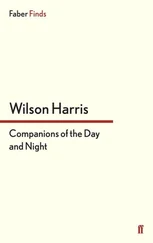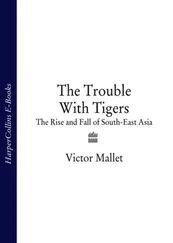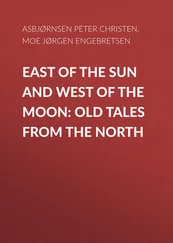Jubilees is a major representative of a type of Jewish literary source often described as “Re-written Bible” (Vermes 1970). Although the exact definition and suitability of this designation have been debated (Machiela 2010), “Re-written Bible” remains a useful way of speaking about a number of Jewish writings known from the Dead Sea Scrolls and elsewhere (on the Dead Sea Scrolls in general, see particularly Flint and VanderKam 1998–99). Among the Qumran manuscripts, for example, the Aramaic text often called the Genesis Apocryphon retells the biblical stories of Noah and Abraham, following the main outlines of the narrative known from Genesis, but considerably embellishing it with non-biblical information. Enough of this fragmentary text remains for us to discern clearly its glorification of Noah’s character, its intense interest in the contemporary geography of the Holy Land and its surroundings, and its portrayal of Abraham as a God-fearing man who regularly offers sacrifice and is the object of God’s special protection (Fitzmyer 2004; Machiela 2009). Evidently, these and other related matters were of commanding importance for this text; they appear in similar guise in Jubilees , prompting questions about the literary relationship of the two writings. Other examples of “Re-written Bible” found at Qumran are less well-preserved: they include a text often called “Reworked Pentateuch” (4Q158, 364–367), along with fragments of Testaments ascribed to Levi, Naphtali, Judah and Joseph, Qahat, and Amram, all of which tell the reader more about biblical characters, some of whom are fairly minor. These Testaments serve as vehicles to promote laws, religious and ethical values, and social attitudes which the writers hold dear. Several of them are also keen to offer predictions of the future, including speculations on the end of days and attendant circumstances (Kolenkow 1975). To them we may add a host of writings, now extant only in fragments, which are often labelled individually as kinds of “Apocryphon,” similarly elaborating biblical characters and their lives for didactic, social, and religious purposes. Attesting to vigorous literary activity in both Aramaic and Hebrew, these writings are almost entirely given over to inner Jewish concerns. These and other related texts often involve annotation of, and commentary upon, biblical texts which are thereby made to speak to the historical situation of the composer. It is not always possible, however, for the modern reader to discern whether, in fact, historical evidence is recoverable from such texts: scholarly opinions on the matter differ considerably (Falk 2007).
Qumran Writings Produced by the “Community”
While the writings from Qumran mentioned so far might be understood as addressing all Jews or their leaders, a significant body of literature among the Dead Sea Scrolls was produced by and for a particular group of Jews which named itself the Yahad , the “Union” or “Community” (Collins 2010). This group is often presented as a “sect” within Judaism; but whether such terminology might properly be applied to it is currently disputed (Jokintara 2010). The Yahad was a highly organized group, admission to which was strictly controlled and activated in stages: members were required to observe stringent rules of purity; to keep the commandments of the Torah exactly as the Yahad interpreted them; and scrupulously to follow regulations set out by the Yahad , or to suffer penalties for non-compliance. The group apparently regarded itself as Israel tout court . Texts which may be described as “codes” or “rules” for conduct in general and in particular situations are characteristic of this Yahad , and include “the Rule of the Community” (1QS and corresponding documents from 4QS); the “Messianic Rule” (1QS a); the “War Scroll” (1QM); and “Some of the Observances of the Torah” (4QMMT). The many poetic compositions included in the collection known to scholars as Hodayot (Thanksgiving Hymns) are very probably for the most part products of the Yahad . The lengthy “Temple Scroll” (11QTemp) is not usually regarded as a Yahad document, but it bears some kind of family resemblance to the “codes” mentioned here (Schiffman 1995; VanderKam and Flint 2002). These collections of rules strongly suggest that the Yahad had some greater or lesser affinity in organization, ritual practice, and belief with the Essenes described in the writings of Philo and Josephus. Indeed, some scholars identify the two groups, whereas others are more cautious, arguing that the “rules” may be better understood as witnessing to a number of different, though closely related groups or associations which shared a common vision of what constitutes Israel as a nation, the ways in which she should maintain purity and ensure that she was a holy nation, and her hopes for the future. This is especially so when the evidence of the Damascus Document is scrutinized: this does not mention Yahad , but legislates for a group (or possibly groups) broadly similar in outlook, but differing in several key details from the group described in the Community Rule (Hempel 1998; Collins 2010).
What seems entirely probable, however, is that the Yahad and related groups (if such there were) grew out of that ferment in Jewish society attendant and consequent upon the “Hellenistic Crisis” and the ensuing Maccabean–Hasmonean constitutional settlement. The Yahad proposes an ideal and very precise ordering of Israel’s political, religious, and social life, adherence to which will ensure that its members are truly observing the demands of the Torah and are thus acceptable to God. The documents of the Yahad evince a keen interest in the future, of which the Yahad itself has a privileged understanding. Many scholars detect, in fact, an anti-Hasmonean tendency in these texts: we shall return to this matter presently. The future is a prominent, though not exclusive theme in another set of Qumran documents commonly ascribed to the Yahad . These set forth a particular interpretation of Scripture, called pesher in Hebrew, which interprets biblical texts (most often the writings of the Prophets) with reference to the past, present, and future life of the Yahad (Lim 2002; Berrin 2005). Strongly influenced by apocalyptic modes of thinking, these commentaries understand the texts which they explicate as heavenly mysteries or secrets (Hebrew razim ) which require a pesher , a “solution” or “interpretation” before they yield their true meaning. The founder of the Yahad is credited with the ability to penetrate these mysteries and to explain their significance, especially as regards Scriptural prophecies. He is named Moreh Tzedeq (commonly translated as Teacher of Righteousness), a multi-valent title which combines notions of his supreme expertise in Torah learning, and his presumed rightful status as priestly ruler in Jerusalem, like biblical personalities whose titles are linguistically similar to his own – Melchi-tzedeq, the priest-king of Salem (Gen. 14:18–20), and Adoni-tzedeq, the king of Jerusalem (Josh. 10:1–3). The appearance of tzedeq in these titles cannot fail to recall the name Zadok, Hebrew Tzadoq , whose name occurs in certain Yahad scrolls and prompts the notion of an anti-Hasmonean stance on the part of the group. Though such an idea is questioned, or occasionally rejected altogether by some scholars, the strong political elements in the pesher -documents, the manner in which the Hasmoneans obtained the high priesthood, and the objections to their occupation of this office recorded elsewhere in Jewish sources, continue on balance to tell in favour of a Zadokite element at some juncture in the composition of the Yahad . Cautious use of the pesharim as sources for the political history of Judah in the late second to early first centuries CE may, therefore, remain a possibility (but see discussion in Charlesworth 2002).
Читать дальше












